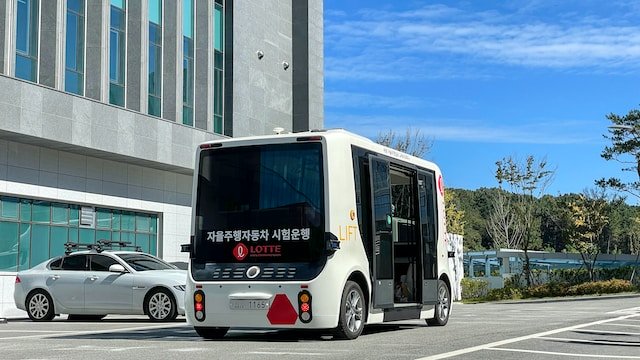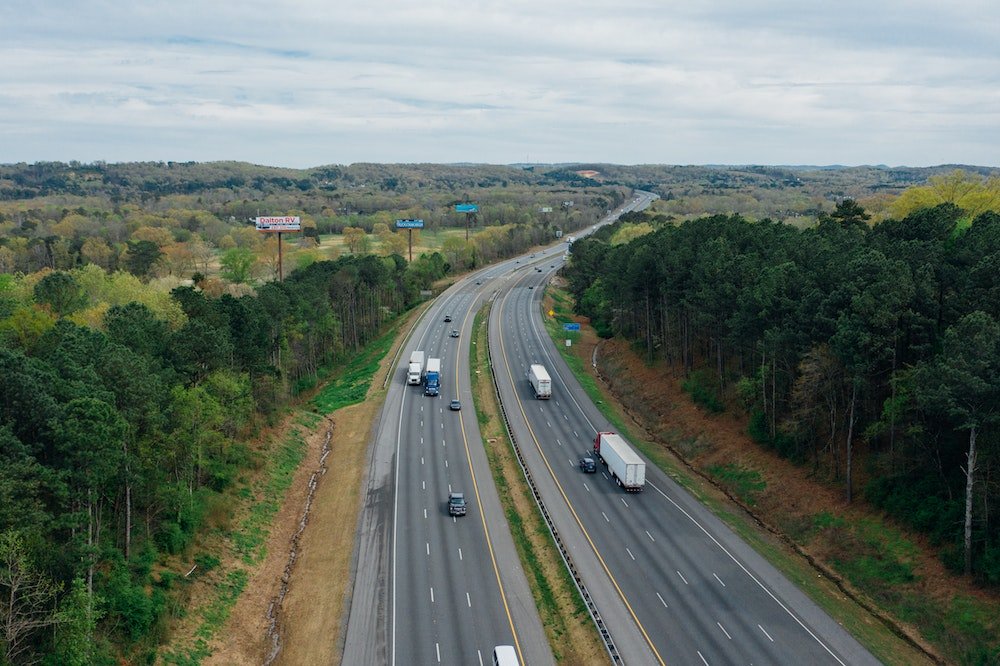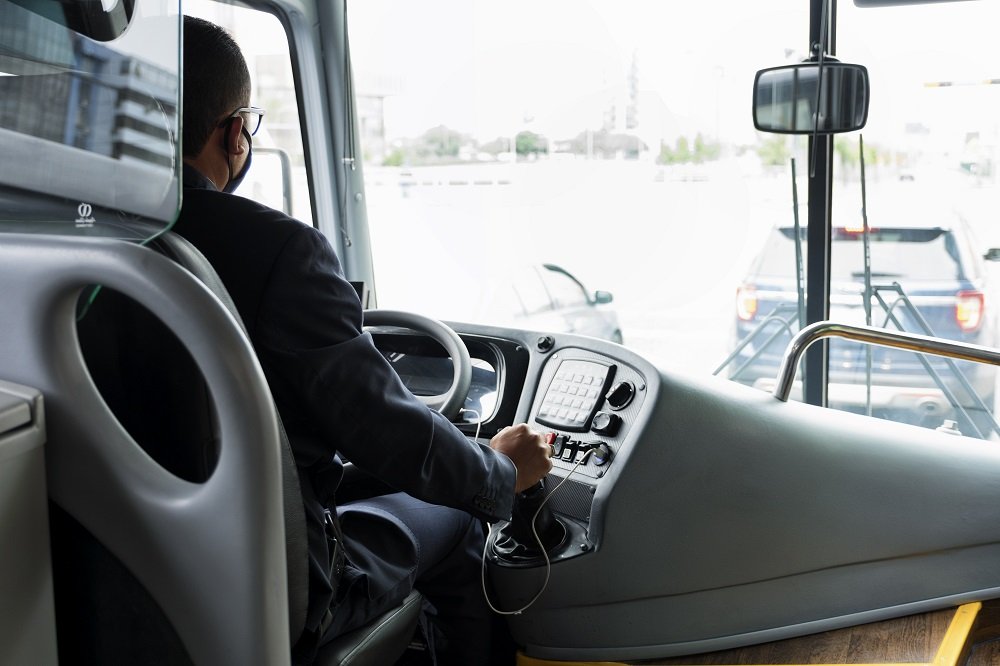
2027 is the year that some experts believe self-driving semi-trucks will get on the highways, although a few road tests are already underway. This will shake up the trucking industry!
It may affect you, whether you’re a seasoned truck driver or new to trucking. What are self-driving trucks? Are they a good idea? Will they replace human truck drivers?
In this post, we discuss everything you should know about self-driving semi-trucks to help you plan and avoid any disruption to your livelihood.
What Are Self-driving Semi-trucks?
Self-driving or automated semi-trucks are eighteen-wheelers capable of traveling independently, i.e., without input from human drivers. They can go anywhere traditional trucks go and do almost everything human drivers do.
These trucks depend on self-driving technology, including sensors, actuators, machine learning systems, and powerful processors to navigate. They create and keep a clear map of their environment using several sensors and cameras strategically placed in various parts of the vehicle.
Some of these include:
- Radar sensors scan the positions of any vehicles nearby.
- Light detection and ranging (Lidar) sensors identify lane markings, detect road edges, and measure distances.
- Video cameras look for pedestrians, track other vehicles, read road signs, and detect traffic lights.
- Ultrasonic sensors in the truck’s wheels detect other vehicles when parking.
Once the sensors receive relevant input, they send it to sophisticated software for processing. The software then plots a path and instructs the car’s actuators to control steering, acceleration, and braking.
Predictive modeling, hard-coded rules, obstacle recognition, and avoidance algorithms help the software navigate obstacles and obey all traffic rules.
At the moment, very few semi-trucks, which are still in their testing phase, can operate entirely on their own. Most require human drivers to act as safety drivers and take control if anything goes wrong. But this is changing fast as autonomous technology continues to improve.
Key car manufacturers in the autonomous trucking industry are also channeling more resources to perfect self-driving technology and eliminate the need for drivers. So far, there are a few types (about 6) of self-driving trucks, each with a different driving automation capacity.
Types of Self-driving Trucks
Driverless trucks are categorized according to their levels of automation or how much human input the vehicles require to operate on public roads. The less human involvement the autonomous vehicle needs to operate, the higher the automation and the category.
Some common levels of autonomous driving include the below.
Level 0: No Automation
Such a vehicle requires manual driving. A human driver must be behind the wheel to perform most driving tasks like steering and acceleration. There could be a few automated truck features, such as automatic emergency braking, blind spot, and lane departure warning. But they are limited to offering warnings and momentary assistance.
Also, the driver has to supervise these features constantly to maintain safety. Most trucks currently fall under this category.
Level 1: Driver Assistance
Level 1 semi-trucks have the most basic form of automation. They come with at least one automated driving system to support the driver’s efforts. It could be a brake or /acceleration driver support system, lane centering, or adaptive cruise speed monitoring control. But not all three.
Level 2: Partial Automation
For level 2 trucks, there is an advanced driving assist system (ADAS) with lane centering and adaptive cruise control. The system provides steering and acceleration plus brake support to the driver. However, the driver still needs to remain alert and monitor all driving operations behind the wheel.
Level 3: Conditional Automation
Autonomous semi-trucks at level 3 have sophisticated self-driving features like environmental detection capabilities. The trucks can perform nearly all the driving tasks but under limited conditions. These conditions must all be met for the automated driving systems to work.
A human driver must also be present to take over upon request by the Artificial Intelligence (AI) systems or during an emergency.
Level 4: High Automation
Level 4 autonomous semi-trucks can perform all driving operations. This includes stopping in case of a system failure or emergency. They don’t require truck drivers.
These autonomous vehicles also don’t need pedals or a steering wheel. Their self-driving autonomous system can take the truck from one point to another following preprogrammed route set via geofencing.
Level 5: Full Automation
Full driving automation for level 5 autonomous trucks lets the vehicle travel to any place through all conditions. It doesn’t require any human interaction or geofencing. Such a system only needs the final destination details, and it takes care of all driving tasks.
Are Driverless Trucks A Good Idea?
Like most opinions, the answer to whether self-driving trucks are a good idea depends on an individual’s perspective. Some people believe autonomous trucks are a good idea for the same reasons others think they are not.
For example, big players in self-driving truck companies and fleet managers support autonomous trucks because they’ll revolutionize the trucking industry by eliminating driver shortages. At the same time, most truck drivers see automated trucks as a threat because they might lose their jobs.
We’ve outlined some of the advantages and disadvantages of self-driving trucks below. So you can weigh and judge for yourself whether they’re a good idea or not.
Advantages Of Autonomous Trucks
Improved Efficiency
With advanced technology comes increased efficiency, and autonomous trucking technology is no exception.
A self-driving semi maximizes performance in terms of the time taken to deliver freight and fuel efficiency. It can choose the most effective route to deliver freight in the shortest time possible. Also, shorter transportation time may push companies to expand their operations. More distribution centers with an increased variety of products can emerge because of this.
Increased Safety
Autonomous trucks will enhance road safety by eliminating human error – one of the most common causes of truck accidents. All the high-tech sensors and software we mentioned earlier work jointly to promote excellent driving and minimize the chances of road accidents.
Minimum to No Breaks
Unlike a human driver, a self-driving truck can operate round-the-clock, including off-peak hours, without any breaks. This means that it can transport more loads faster than human truck drivers and whenever the need arises.
Fleet managers also don’t have to stress about drivers complying with the strict logging requirements by the Department of Transportation.
Reduced Operating Costs
As a result of all the benefits above, automated trucks lower operating costs. Specifically, faster freight delivery and fuel efficiency reduce fuel expenses. While increased safety translates to substantial savings in insurance claims, settlements, and accident repairs. Having no drivers also lowers labor costs for trucking companies.
Disadvantages Of Autonomous Trucks
System Failures
Picture a fully loaded automated vehicle, say a semi-truck at about 80,000 pounds. It’s taking instructions from its high-tech system, cruising the highways. Then, the system fails. What would happen?
Critics of autonomous trucking argue that accidents ensuing from driverless trucks are more damaging than those with truck drivers for one main reason: They lack the human connection and live-saving instincts humans have.
In this scenario, if a human driver were behind the wheel, they could make eye contact with other drivers, send subtle cues, and make split-second judgment calls to prevent the accident or minimize its impact. A self-driving truck cannot do the same.
Security Threats
Self-driving technology is susceptible to cyber criminals, including hackers. Malicious attacks can bring trucking operations to a halt, affecting the entire supply chain and leading to losses.
Weather Conditions
Unpredictable weather poses a significant challenge to most self-driving vehicles. Can the sensors still identify lane markings if they’re obscured by snow?
Automotive engineers are working hard to ensure autonomous cars can operate under all weather conditions. But the uncertainty of weather and other natural phenomenon may pose new challenges with time.
Government Regulation and Legal Liability
What happens when one autonomous semi-truck collides with another? Who will be accountable or liable for the accident? What if the truck collided with a non-self-driving vehicle?
The regulatory process for self-driving cars shifted from federal control to state-by-state mandate. However, most states are yet to polish their autonomous vehicle laws to clarify such matters. Things are likely to change over time, but until then, government regulation on the operation of autonomous trucks remains a challenge.
Overreliance On Big Tech
Automated trucks will require periodic software updates to operate optimally. Because of this, big tech companies currently working to make driving automation a reality, like Torc Robotics, might take control of the transportation industry. If this happens, fleet managers may lose control of their fleet management costs.
Will Self-driving Semi-trucks Replace Human Drivers?
The truth is that trucking jobs, as we know them, will change significantly. And yes, a good number of truck drivers will lose their jobs. But self-driving semi-trucks will only displace as opposed to completely replacing human drivers.
Research estimates that automated trucks may displace more than 2 million truck drivers in the United States and Europe. The demand for new drivers will also reduce by about 70% as most current professional trucking jobs will become redundant.
New opportunities are likely to emerge. Following the trends from the ongoing driverless testing pilot programs, truck drivers may be required to take on a supervisory role. That is, supervising the truck and cargo and ensuring everything goes smoothly. They may also need to conduct emergency repairs from time to time.
Also, short-distance truck drivers will keep their jobs longer to help the trucks navigate congested urban areas. However, if you work long-haul routes, you will have to adjust since the trucks are made to automate highway driving. You can switch to short-distance trucking to continue driving. This can mean reduced working hours which will translate into a pay cut.
Alternatively, you can acquire more maintenance and supervisory skills. Or take new training and explore new roles like being an automated truck technician.
The good news is we still have a few years before driverless trucks become the norm on our highways. So, you’ll have enough time to adjust and prepare for the change.
How Soon Will Large-Scale Use Of Driverless Trucks Become A Reality?
As noted before, we might start seeing a good number of self-driving trucks on our highways as soon as 2027. But the full transition into autonomous trucking will occur gradually throughout the next decade.
The automated trucks will be made available for use in four distinct phases, using a fleet of self-driving trucks connected through wireless technology:
- Phase one: A fleet of semi-trucks follows a lead truck closely on the highway. Each truck will have a human driver to take control of the wheel on some, mostly smaller, roads and allow the AI program to take over driving on freeways. This technique is commonly referred to as platooning.
- Phase two: In this phase, only the lead truck will have a human driver, as a convoy of automated trucks follows closely behind. It may become a reality by 2025.
- Phase three: For the third phase, the lead truck will be completely self-driving on the highway. Meaning the entire convoy will be autonomous. However, a human driver might have to be present in the lead truck to help navigate loading docks and small roads.
- Phase four: The final phase will see 100% automated trucks on the highways at scale. There will be no human driver in any of the trucks. This may become a reality by early 2030.
What’s Next?
If you’re a truck driver, you may be required to adapt and take on a more passive but crucial role similar to pilots in the aviation industry.
New opportunities you can take advantage of will also emerge as automation continues to infiltrate the trucking industry.
Chances are, with time, other tasks like loading and unloading will get automated too. Overall, the transportation industry is staring at a completely digitized 24/7 supply chain, and hopefully, you are ready to make it work for you!
To stay updated with the latest news on self-driving AI and autonomous trucking, read our blog!









